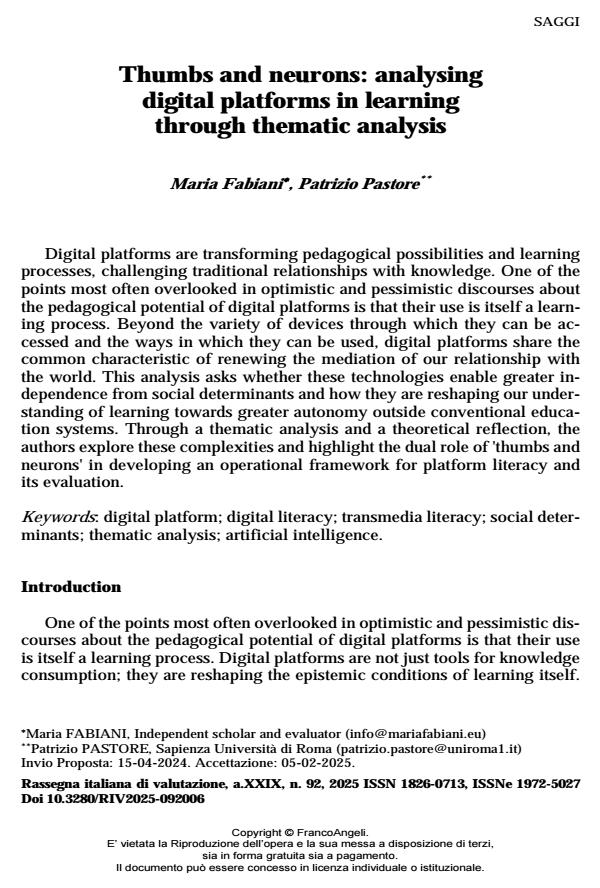Thumbs and neurons: analysing digital platforms in learning through thematic analysis
Titolo Rivista RIV Rassegna Italiana di Valutazione
Autori/Curatori Maria Fabiani, Patrizio Pastore
Anno di pubblicazione 2025 Fascicolo 2025/92
Lingua Inglese Numero pagine 27 P. 96-122 Dimensione file 266 KB
DOI 10.3280/RIV2025-092006
Il DOI è il codice a barre della proprietà intellettuale: per saperne di più
clicca qui
Qui sotto puoi vedere in anteprima la prima pagina di questo articolo.
Se questo articolo ti interessa, lo puoi acquistare (e scaricare in formato pdf) seguendo le facili indicazioni per acquistare il download credit. Acquista Download Credits per scaricare questo Articolo in formato PDF

FrancoAngeli è membro della Publishers International Linking Association, Inc (PILA)associazione indipendente e non profit per facilitare (attraverso i servizi tecnologici implementati da CrossRef.org) l’accesso degli studiosi ai contenuti digitali nelle pubblicazioni professionali e scientifiche
Digital platforms are transforming pedagogical possibilities and learning processes, challenging traditional relationships with knowledge. One of the points most often overlooked in optimistic and pessimistic discourses about the pedagogical potential of digital platforms is that their use is itself a learning process. Beyond the variety of devices through which they can be accessed and the ways in which they can be used, digital platforms share the common characteristic of renewing the mediation of our relationship with the world. This analysis asks whether these technologies enable greater independence from social determinants and how they are reshaping our understanding of learning towards greater autonomy outside conventional education systems. Through a thematic analysis and a theoretical reflection, the authors explore these complexities and highlight the dual role of 'thumbs and neurons' in developing an operational framework for platform literacy and its evaluation.
Parole chiave:digital platform; digital literacy; transmedia literacy; social determinants; thematic analysis; artificial intelligence.
Maria Fabiani, Patrizio Pastore, Thumbs and neurons: analysing digital platforms in learning through thematic analysis in "RIV Rassegna Italiana di Valutazione" 92/2025, pp 96-122, DOI: 10.3280/RIV2025-092006